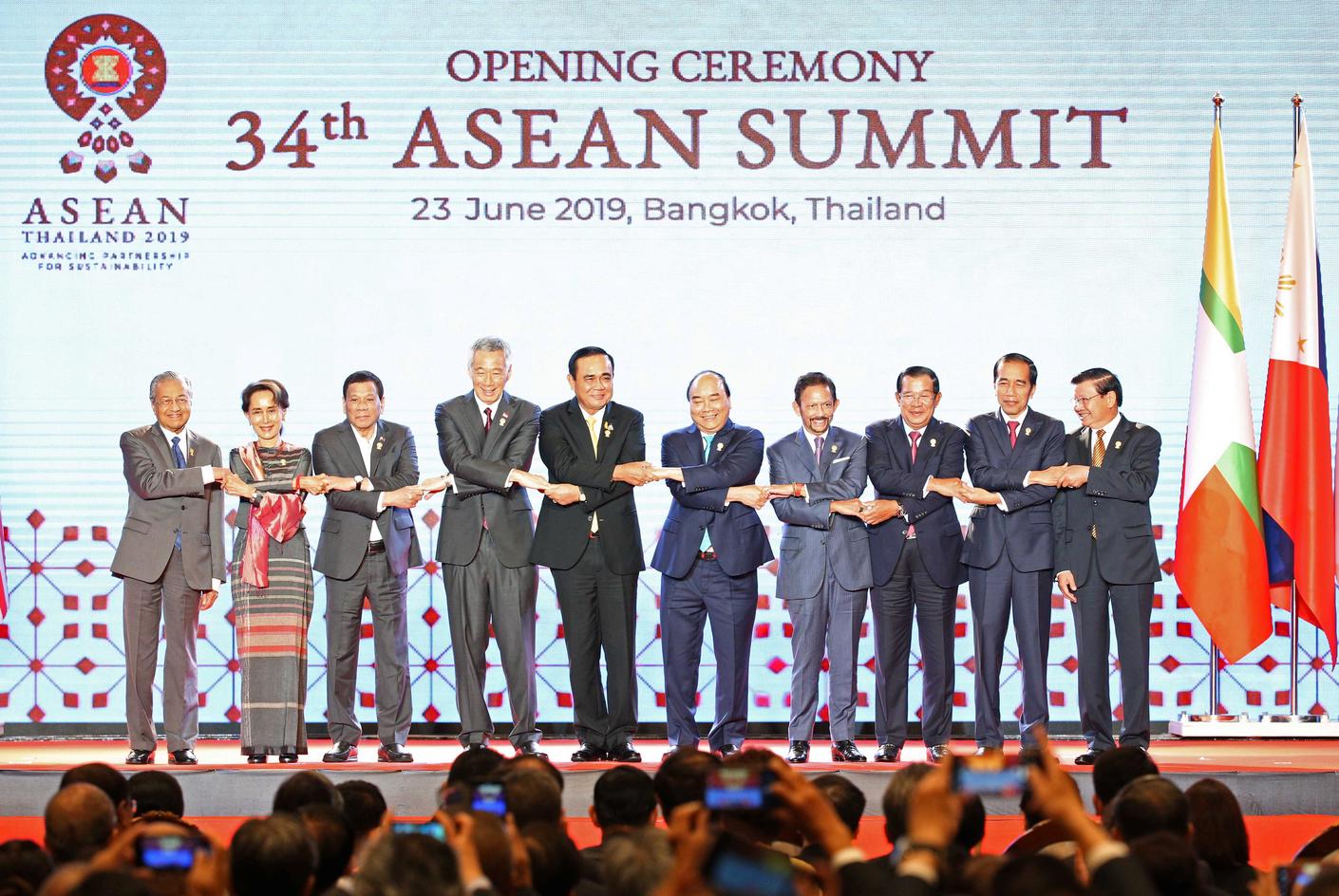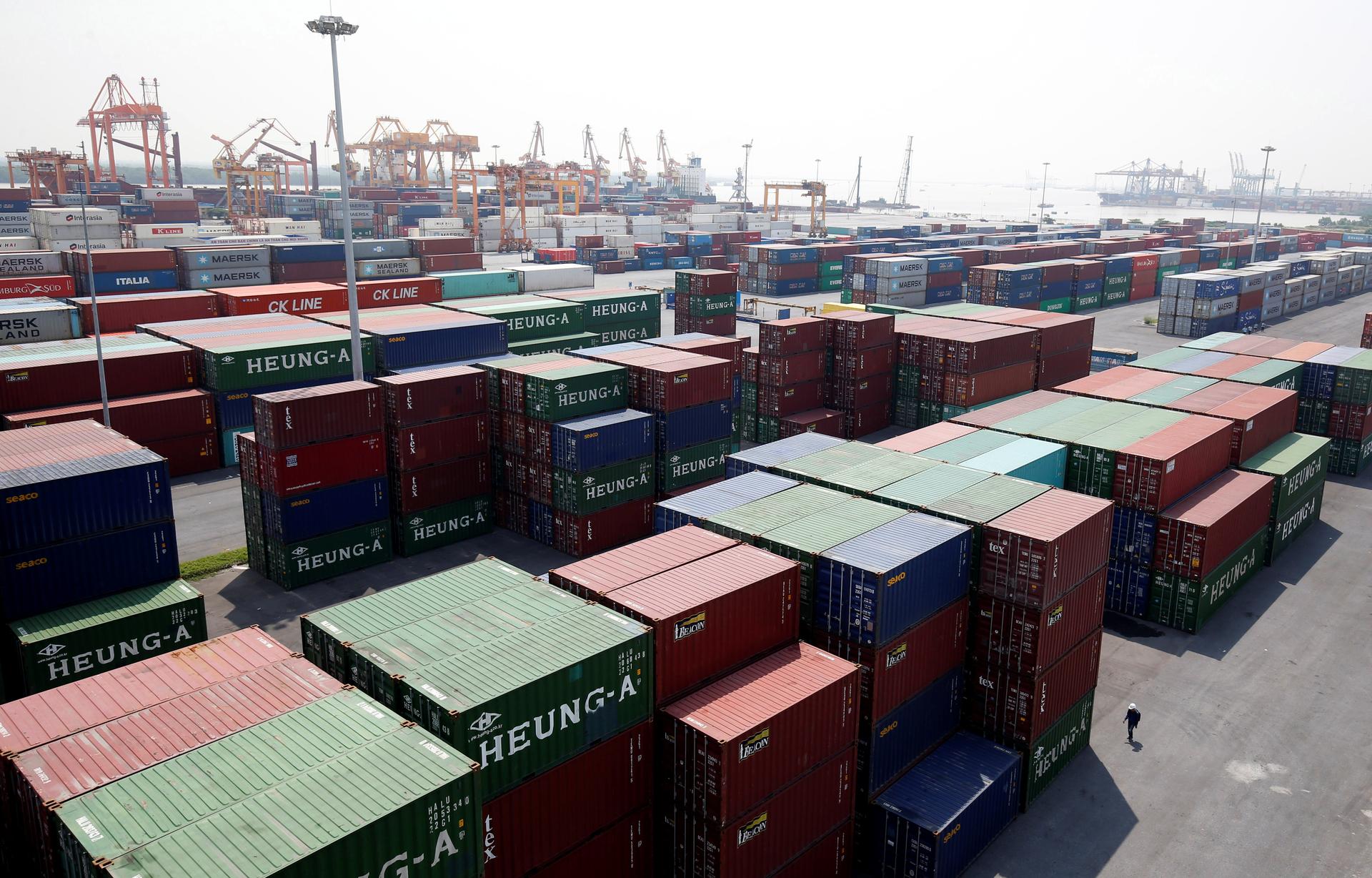‘ASEAN integration’ has been a popular phrase in the region, especially since the ASEAN Community came into being in 2015. But the region’s still-low level of intra-regional trade shows that a long road lies ahead when it comes to deepening trade linkages within its 10 member states.
The July signing of the European Union-Vietnam Free Trade Agreement (EVFTA) was widely welcomed as a further step forward in Vietnam’s deeper participation in the global trading system. Indeed, it is the latest in a series of free trade agreements the country has signed with a mix of external partners thus far.
Vietnam, along with Singapore, has the largest number of FTAs in ASEAN, being a signatory to 16 of them, according to the Emerging Markets Research of Hong Kong Trade Development Council, whose latest update was published on May 1.
But when it comes to the depth of trade integration with fellow ASEAN member countries, the story might look a little different.
According to data from ASEAN Secretariat, despite the fact that trading between regional countries has risen from roughly US$618 billion in 2013 to $640 billion in 2018, intra-ASEAN trade in goods only accounts for 22.9 percent of the total number in 2018. That of 2013 is 24.4 percent.
That the level of intra-ASEAN trade needs major action is something that analysts have long pointed out as a weak link in regional integration. Malaysia’s Prime Minister Mahathir Mohamad drove this point home recently when speaking to the Malaysian media at the 34th ASEAN Summit in Bangkok, Thailand. He urged ASEAN member countries to exert special efforts to increase trade within the group.
The Prime Minister’s Office of Malaysia recorded his answer: “He said trade within the members was very small at 25 percent of total trade compared to other groupings like the EU (European Union) and North American Union where the trade recorded was between 40 to 50 percent.”
The Joint Communiqué of the 52nd ASEAN Foreign Ministers’ Meeting (AMM) clearly stated “doubling of intra-ASEAN trade by 2025” as one of the targets to advance the “regional economic integration agenda... envisioned in the AEC Blueprint 2025.”
More noticeably, ASEAN officials have already adopted the idea of creating a supply chain within the member states.
“We welcomed the ongoing efforts on the development of an ASEAN database of priority trade routes and a framework to enhance supply chain efficiency that would improve regional economic integration and production networks,” the AMM statement said.
The situation, often taken as a main indicator of the depth of economic integration among a group of countries, causes much worry in the current regional environment, as the trade stand-off between the United States and China continues to escalate.
Among the concerns are that in a less cooperative geopolitical environment, ASEAN countries could end up engaging in more competition for foreign investments and contracts.
ASEAN’s institutional framework does not preclude its member states from pursuing independent trade policies. According to the ASEAN Integration Report published in December 2018 by the ASEAN Prosperity Initiative, a project led by Malaysia’s Institute for Democracy and Economic Affairs.
The report also explained that since ASEAN is not a customs union, its members do not have a common external tariff and are not compelled to follow common commercial policies with third countries.
“As a result, ASEAN member states have divergent trade relationships, for example Singapore and Vietnam have signed free trade agreements with the EU, whilst Malaysia and Indonesia have not,” the report said.
Talking to Tuoi Tre News in Ho Chi Minh City, Calla Weimer, president of the American Committee on Asian Economic Studies and editor-in-chief of the Journal of Asian Economics, stressed that ASEAN countries have various economic niches.
For instance, Singapore has a very high income, high technology, and deep engagements with the global economy, while some others are still very poor, and mainly rely on unskilled labor.
In Weimer’s viewpoint, the U.S.-China trade war is “sending a signal” to American businesses that they had better diversify and not be so tied to China. In other words, she said, U.S. companies’ interests probably lie in diversifying trade and economic ties with other countries. Such a change would be in favor of Southeast Asia and its economic interests.
“I think some of the production bases that have been in China may not necessarily leave, but where growth takes place would be outside of China,” she said of the impact of the trade tensions between the U.S. and China.
It has been a long time since ASEAN states reduced tariffs within the region. The ASEAN Integration Report showed that more than 90 percent of the regional countries’ tariff lines already have a preference margin of zero, where preferential tariffs are no lower than the most favored nation rate. More than 70 percent of intra-ASEAN trade is conducted at Most Favored Nation (MFN) rates at zero.
The same report argued that ASEAN, through its focus on multilateralism and open economies, has been playing an important role in increasing overall trade, not least because its economies are very trade-dependent.
|
|
| Shipping containers are seen at a port in Hai Phong city, Vietnam July 12, 2018. Photo: Reuters |
More trade, deeper integration
Despite having existed for more than half a century, ASEAN countries only came together to create the ASEAN Community in 2015.
By the time it was launched, the ASEAN Economic Community (AEC) – one of the ASEAN Community’s three pillars – had been perceived among several sectors as a threat to local businesses, which were used to being shielded from outside competition by the tariff barriers.
Despite such fears, Vietnamese officials have stressed that economic integration and removal of barriers to trade and commerce are far from new for the country of almost a million people.
Vietnam has been integrating with ASEAN for more than 20 years, and not only since the creation of the ASEAN Community and the ASEAN Economic Community four years ago, Nguyen Thi Quynh Nga, deputy head of the multilateral trade policy department under the Vietnamese Ministry of Industry and Trade, underlined in a press meeting in June.
“The fact is that there is no shock for the businesses, as we have participated in ASEAN for 20 years now, and we have proceeded to remove tariffs for 20 years,” Nga said.
“The initiation of AEC is only a milestone marking when the level of tariff elimination among ASEAN countries reached a high of over 90 percent. There is nothing new in [its] nature.”
Data from the multilateral trade policy department showed that in the first half of this year, Vietnam's exports to ASEAN countries reached $3.8 billion, up nearly 32 percent over the same period last year.
The region's market currently accounts for about 20 percent of the total export turnover and about 25 percent of the total imports of Vietnam.
Additionally, Weimer believes that Vietnam’s case shows a way in which ASEAN member states could come together and thrive by specialization and trade.
“Open markets, especially in today’s supply chain types of production, are the way for ASEAN to go. Different countries can be integrated into supply chains, specializing in different types of functions,” she suggested.
Dr. Nguyen Duc Khuong, finance professor and deputy director for research at IPAG Business School in France, thinks ASEAN can improve its performance by creating its own value chain.
Khuong told Tuoi Tre News that the cutting-edge advantage of ASEAN nowadays is its value chain, which allows the ASEAN Community to carry on forming new value chains with major economic players like China, the U.S. and EU.
By joining forces, ASEAN can create common value chains which make trade easier between countries and help promote mutual benefits.
This will consequently push ASEAN’s economic weight in the global economy, Khuong pointed out.
When Vietnam becomes ASEAN Chair in 2020, the country is expected to take on the responsibility of enhancing the community’s relations within member states and with other regions of the world.
Khuong argues that by doing well with promoting trade, Vietnam as ASEAN Chair can devise strategies to support global trade and balance the interests of different economies, instead of only competing in trade.
“Vietnam, as the upcoming ASEAN chairman, needs to understand that the challenge of ASEAN in global integration is to elevate its position, competitiveness and join its forces. It is to create common value chains, helping trade activities between countries become easier for mutual benefits,” Khuong added.
|
“Both sides agreed to promote the mutual import and export of each country’s products, including electrical and electronics, petroleum products, chemicals and chemical products, manufactures of metal, machinery, equipment and parts, agricultural produce, palm oil, halal products, seafood, as well as garments and textiles, and raise the total trade to reach $15 billion or higher by 2020.” Vietnam-Malaysia 2019 Joint Statement, Hanoi |
* This article was produced in collaboration with the ‘Reporting ASEAN’ media program and its Cambodia-Lao PDR-Myanmar-Vietnam (CLMV) Integration Series.
Like us on Facebook or follow us on Twitter to get the latest news about Vietnam!




















































